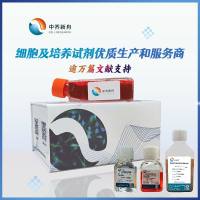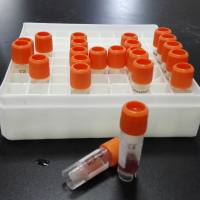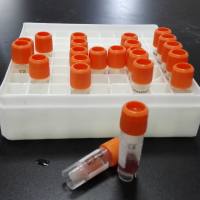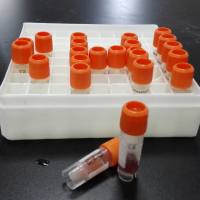PCR基本实验方法(五)
互联网
Cloning PCR Products
T-A Cloning Strategy: Taq and other polymerases seem to have a terminal transferase activity which results in the non-templated addition of a single nucleotide to the 3'-ends of PCR products. In the presence of all 4 dNTPs, dA is preferentially added; however, use of a single dNTP in a reaction mix results in (relatively inefficient) addition of that nucleotide. This complicates cloning, as the supposedly blunt-ended PCR product often is not, and blunt-ended cloning protocols often do not work or are very inefficient. This can be remedied by incubation of PCR products with T4 DNA pol or Klenow pol, which "polishes" the ends due to a 3'->5' exonuclease activity (Lui and Schwartz, 1992; BioTechniques, 20: 28-30). However, this terminal transferase activity is also the basis of a clever cloning strategy: this uses Taq pol to add a single dT to the 3'-ends of a blunt-cut cloning vector such as pUC or pBluescriptTM, and simple ligation of the PCR product into the now "sticky-ended" plasmid (Marchuk et al., 1990; NAR 19: 1156).
Incorporation of Restriction Sites in Primers: Although this may be rendered simple by incorporating the same or different restriction sites at the 5'-ends of PCR primers - which allows generation of sticky ends and straightforward cloning into appropriate vectors - these should have AT LEAST two additional bases 5' to the recognition sequence to ensure that the enzymes will in fact recognise the sequence - and it is often found that even when this is done, the efficiency of cutting of fresh product is next to zero. This can sometimes be remedied by incubating fresh product with Proteinase K (to digest off tightly-attached Taq pol), but often is not. A solution to the problem is to use the "Klenow-Kinase-Ligase" (KKL) method: this involves "polishing" products with Klenow, kinasing them to get 5'-phosphorylation (NB: OLIGONUCLEOTIDE PRIMERS NORMALLY HAVE NO 5'-PHOSPHATES!!!), ligating the fragments together to get concatemers, then restricting these with the appropriate restriction enzymes to generate the sticky-ended fragments suitable for cloning (Lorens, 1991; PCR Methods and Applications, 1: 140-141).
AND ALWAYS REMEMBER:
WORK CLEAN
TITRATE MAGNESIUM
DON'T USE TOO MUCH TEMPLATE DNA
DON'T USE PCR PRODUCTS IN PCR PREPARATION AREAS
ALWAYS, ALWAYS INCLUDE WATER AND VERY DILUTE POSITIVE CONTROLS IN EVERY EXPERIMENT
WEAR GLOVES
USE PLUGGED TIPS









